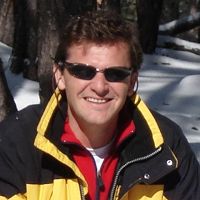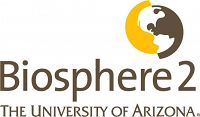SWES Colloquium Series 2013-2014
Collaborative Research Opportunities at the Landscape Evolution Observatory of Biosphere 2
Marley 230
-
Catalina-Jemez, INVESTIGATOR
Presentation by Dr. Peter Troch
ABSTRACT: The mission of Biosphere 2 is to advance our understanding of the natural environment through unique experimentation, training of interdisciplinary scientists, science education and public outreach, and organization of meetings to address grand challenges that affect the quality of life. The Biosphere 2 Science Program addresses societal grand challenges related to water, environmental and energy management through design of large-scale experimentation. The University of Arizona Biosphere 2 consists of a unique large-scale experimental apparatus housing six model ecosystems, a team of multidisciplinary scientists, a broad science education and public outreach program, and a modern conference center. One of the six model ecosystems is the recently completed Landscape Evolution Observatory (LEO). LEO consists of three identical, sloping, 333 m2 convergent landscapes inside a 5,000 m2 environmentally controlled facility. These engineered landscapes contain 1-meter depth of basaltic tephra, ground to homogenous loamy sand that will undergo physical, chemical, and mineralogical changes over many years. Each landscape contains a spatially dense sensor and sampler network capable of resolving meter-scale lateral heterogeneity and sub-meter scale vertical heterogeneity in moisture, energy and carbon states and fluxes. The density of sensors and frequency at which they can be polled allows for measurement to be made that are impossible in natural field settings. Embedded solution and gas samplers allow for quantification of biogeochemical processes, and facilitate the use of chemical tracers to study water movement at very dense spatial scales. Each ~600 metric ton landscape has load cells embedded into the structure to measure changes in total system mass with 0.05% full-scale repeatability (equivalent to less than 1 cm of precipitation). This facilitates the real time accounting of hydrological partitioning at the hillslope scale. Each hillslope has an engineered rain system capable of raining at rates between 3 and 45 mm/hr in a range of spatial patterns. The rain systems are capable of creating long-term steady state conditions or to run complex simulations. The precipitation water supply storage system is flexibly designed in order to facilitate addition of tracers in constant or time-varying rates to any of the three hillslopes. This presentation will give an overview of lessons learned during the commissioning phase of the first hillslope of LEO, and will indicate several opportunities for collaborative research at Biosphere 2.
Discipline Tags, CZOs, and Links
Hydrology
Modeling / Computational Science
Geochemistry / Mineralogy
Soil Science / Pedology
Geomorphology
Catalina-Jemez
Explore Further



